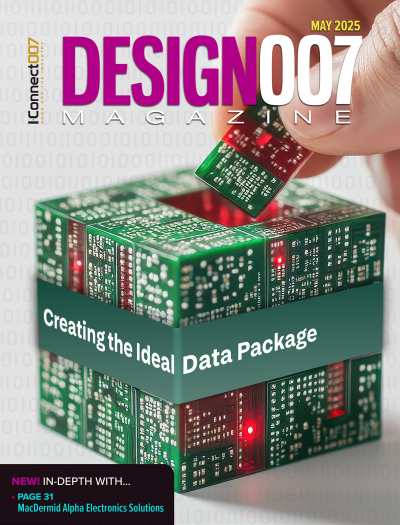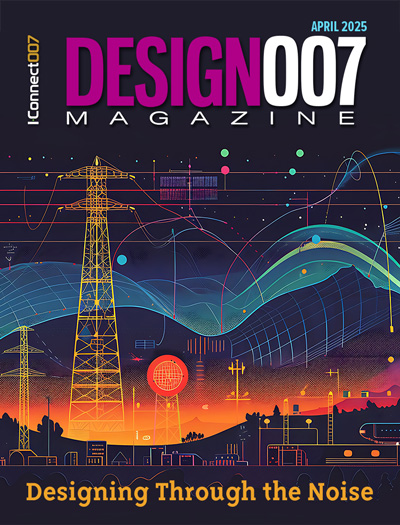-

- News
- Books
Featured Books
- design007 Magazine
Latest Issues
Current Issue
All About That Route
Most designers favor manual routing, but today's interactive autorouters may be changing designers' minds by allowing users more direct control. In this issue, our expert contributors discuss a variety of manual and autorouting strategies.

Creating the Ideal Data Package
Why is it so difficult to create the ideal data package? Many of these simple errors can be alleviated by paying attention to detail—and knowing what issues to look out for. So, this month, our experts weigh in on the best practices for creating the ideal design data package for your design.

Designing Through the Noise
Our experts discuss the constantly evolving world of RF design, including the many tradeoffs, material considerations, and design tips and techniques that designers and design engineers need to know to succeed in this high-frequency realm.
- Articles
- Columns
Search Console
- Links
- Media kit
||| MENU - design007 Magazine
What's New in ODB++?
October 8, 2014 |Estimated reading time: 1 minute
ODB++ is a complete PCB manufacturing exchange data format that contains all of the data required for defining a PCB product in manufacturing. “ODB” stands for Open Data Base, with the format openly available to anyone who registers as a member of the ODB++ Solutions Alliance. All of the fabrication requirements such as the graphical definition of the layers or mechanical information, the underlying data represented in drawings such as the drill drawings, fabrication instructions, layer buildup definition, and also the information required for bare-board testing and automatic optical inspection are included in the ODB++ product model. For PCB assembly, all of the manufacturing information is included: The solder paste definitions, the component placements and rotations, the BOM, and the approved vendor list for alternative parts, as well as the ICT test-point locations. All the product model content is contained within a simple archive that can be sent to those in the manufacturing supply chain.In the newest version of ODB++, v8, content has been added based on input received from the thousands of people who use ODB++ and solutions-development partners worldwide, either directly or through the technical support channels of CAD/CAM tool vendors. Version 8 contains significant incremental improvements over the current mainstream version (ODB++ v7), and is designed to enable a smooth transition to higher levels of process integration and automation across the design/fabrication/assembly/test PCB flow.ODB++ v8 enables software tools such as DFM analysis and CAM systems to perform their tasks with the minimum dependency on keyboard/mouse input and the maximum level of automation based on the intelligence embedded in the software-model of the PCB product.Read the full article here.Editor's Note: This article originally appeared in the September 2014 issue of The PCB Design Magazine.


